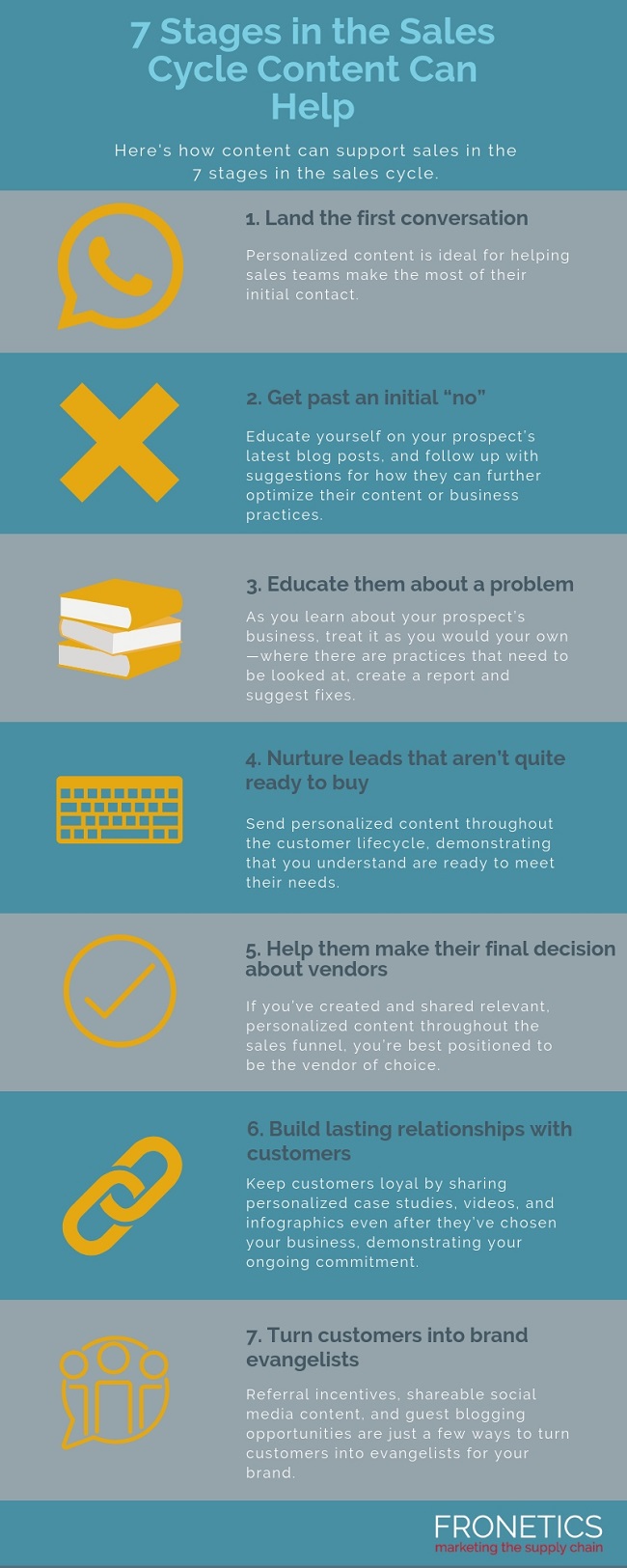
by Fronetics | Nov 13, 2018 | Blog, Content Marketing, Data/Analytics, Logistics, Marketing, Strategy, Supply Chain
The results are in: Artificial intelligence (AI) has significant value for many business sectors. But what are the most effective ways to apply AI to your supply chain management company?
Executives of many leading companies are looking for ways to integrate AI into their operations. A recent McKinsey & Co. study estimates that 40% of the potential value associated with data analytics today comes from techniques called “deep learning.” Deep learning refers to AI that can monitor a system and make adjustments rather than simply repeate a single task. Industry use of deep learning techniques remains relatively low as companies determine how best to use AI to meet business needs.
[bctt tweet=”Using AI this way can improve forecasting accuracy by 10-20%, allowing companies to reduce inventory costs by as much as 5% and generate 2-3% increased revenue.” username=”Fronetics”]
Supply chain management is one of the business sectors that can get the most value out of deep learning techniques. Brick-and-mortar retailers tend to see a 1-2% increase in sales revenue when they use AI to personalize promotions based on customer data analytics. Supply chain management organizations can expect to see greater benefit from AI that forecasts demand by analyzing the underlying market factors. Using AI this way can improve forecasting accuracy by 10-20%, allowing companies to reduce inventory costs by as much as 5% and generate 2-3% increased revenue.
In addition to reducing inventory costs in supply chain management organizations, deep learning can create trillions of dollars in value in marketing and sales revenue and save costs through predictive maintenance. The best way to determine how AI can serve your needs is to look at how your organization uses traditional analytics techniques: AI can often provide higher performance in conducting analytics and introduce additional layers of analysis. The technology is always improving, so the potential value for companies adopting deep learning techniques is expected to continue to rise.
There are, however, obstacles facing companies looking for ways to use AI techniques. It is essential to plan for the security and privacy issues of data analytics. Deep learning works best with large-scale datasets, which not all organizations can assemble or access. The level of expertise necessary to implement and service AI technology comes with added expenses, but determining the right way to apply AI to your organization makes these costs and challenges a rewarding investment.
Related posts:


by Fronetics | Nov 12, 2018 | Blog, Content Marketing, Logistics, Marketing, Social Media, Supply Chain
Social platforms create an opportunity to connect with prospects but only if your efforts align with customer preferences. Here’s how brands can focus on creating content that customers actually want.
In 2018 social media platforms have made a concerted effort to keep their platforms, well, social. User experience is the top priority, and many brands and businesses feel like they’ve been pushed to the back burner.
Businesses aiming to increase brand awareness must think long-term when it comes to social media. Social media marketers need to engage with users, not simply disrupt the user’s experience. This means that content shared by a brand needs to be relevant, useful, and let’s face it, visually engaging.
The overlap between brands and users
In the 2018 Social Sprout Index, researchers found that 61% of marketers create posts that teach readers something. But that’s not all, 59% of consumers reported wanting to read posts that teach something. The connection is obvious.
[bctt tweet=”In the 2018 Social Sprout Index, researchers found that 61% of marketers create posts that teach readers something. But that’s not all, 59% of consumers reported wanting to read posts that teach something. The connection is obvious.” username=”Fronetics”]
Businesses looking to increase user engagement on social platforms need to focus on providing users with what they want. Users want you to teach them. So, showcase why your brand is a leader in your industry or highlight how your products or services can be the solution to a problem.
Most social media users are still using platforms to connect with friends and family, so it’s imperative for businesses to focus on authentic engagement. This can only be accomplished by connecting readers to useful and informative information.
“The most enlightened social marketing strategy integrates awareness and consideration stage content — opening the door with entertainment and inspiration, then carrying audiences across the threshold with education, information about new product offerings and discounts and sales.” Social Sprout Index 2018
And while 80% of marketers report increasing brand awareness as their primary social media goal, it’s not always easy to know how to get started creating relevant content that will resonate with users. Here is Kettie Laky, Social Media Director, to explain how businesses can be helpful to users on social platforms.
Video: How businesses can be helpful on social platforms
Takeaway: Focus on what’s important
It’s time for marketers to stop wasting time and resources on content that doesn’t resonate with users. Aligning priorities between what users want and what marketers are producing is key to creating long-lasting relationships with prospects. Brands who are actually helpful, not intrusive, will reap the benefits of their hard work.
Related posts:


by Fronetics | Nov 8, 2018 | Blog, Content Marketing, Current Events, Logistics, Marketing, Strategy, Supply Chain
Artificial intelligence (AI) is changing the way the global supply chain operates and may make most supply chain management companies obsolete in 5-10 years. What can your company expect and what are the best strategies for preparing?
AI has a significant presence in supply chain management. Leading companies already use AI to run predictive analytics and to automate repetitive, labor-intensive tasks like purchasing, invoicing, and customer service. But executives are still needed to make decisions after reviewing data.
[bctt tweet=”Authors from a recent study predict that in 5-10 years the supply chain will be run entirely by digital technologies that could eliminate the need for human oversight.” username=”Fronetics”]
According to a study from the Harvard Business Review, that’s about to change. In 5-10 years, the authors predict, the supply chain will be run entirely by digital technologies that could eliminate the need for human oversight. Blockchains can coordinate between the parties involved in flexible supply networks, improving transparency and crisis-response times. Robotics already automate warehouses and fulfillment centers, increasing efficiency and minimizing the risks of employee injury. Moreover, digital technologies are increasingly able to execute purchasing and inventory management tasks.
Digital control towers
The new nerve-center for leading organizations’ operations is the “digital control tower,” typically a room with walls of high definition screens showing real-time graphics and information on every step in the supply chain. Data analysts staff these rooms 24/7, monitoring the flow from order to delivery.
These control towers provide end-to-end visibility into global supply chains. Process bottlenecks and inventory shortfalls can be predicted and managed before problems develop. Digital control centers allow more predictive management styles based on up-to-date and accurate information, which results in increased customer focus and process efficiency. It is an operational model that is gaining popularity across business sectors.
What does this mean for supply chain management?
Technology will continue to replace human labor in supply chain management. As data analytics and self-learning technology develop, we can expect to see more kinds of jobs performed by AI. Planning for this trend towards automation is essential for all supply-chain companies.
The role of supply chain executives continues to change. Instead of managing people performing repetitive and transactional tasks, executives are working with a smaller number of highly specialized data experts to design information and material flows. The skill set associated with supply chain management will shift to focus on data analysis and algorithms, which will require new hiring or employee re-training. Finding skilled analysts to fill those roles will be crucial to organizations seeking to adapt to new supply chain conditions
Related posts:


by Fronetics | Nov 7, 2018 | Blog, Content Marketing, Logistics, Marketing, Social Media, Strategy, Supply Chain
Companies can reach millennial B2B buyers by partnering with popular social media users who speak with passion and expertise to young professionals.
Numbering 80 million, millennials have become the largest demographic segment in the United States and are expected to command more than $1 trillion in disposable income by the year 2020. As this generation comprises an increasing percentage of the B2B buying landscape, businesses must pay attention to their professional purchasing habits — which, it turns out, bleed over from their personal purchasing patterns.
Millennials are notoriously hard to reach through traditional marketing strategies. But successfully appealing to that demographic is becoming more and more important. Jay I. Sinha and Thomas T. Fung, marketing specialists at Temple University, explain how B2B companies can use “nano-marketing” techniques to generate buzz and build credibility with millennials.
Micro-influencers
Large companies have traditionally used celebrities and recognizable logos to promote their brands. But millennials have turned away from advertising and endorsements that aren’t perceived as authentic or based on expert knowledge.
Millennials have led a surge in the popularity of social media platforms, and companies have found increasing success in using sites like Instagram, Snapchat, Pinterest, and YouTube to market to this demographic.
[bctt tweet=”“Micro-influencers,” or social media users whose followers number between 1,000 and 100,000, have proven four times more likely to generate viewer engagement over the products they review than celebrity endorsements.” username=”Fronetics”]
“Micro-influencers,” or social media users whose followers number between 1,000 and 100,000, have proven four times more likely to generate viewer engagement over the products they review than celebrity endorsements. Partnering with micro-influencers is a highly affordable way for companies to make their brands visible and relatable.
Micro-influencers have helped turn start-ups into major brand-names and have helped established companies extend their influence into youthful markets, leading Inc. magazine to declare 2018 the “Year of the Micro-Influencer.”
Strategies for B2B companies
Sinha and Fung argue that this strategy is not just for B2C companies selling products known to appeal to millennial consumers. What’s known as nano-marketing, or partnership with micro-influencers, can be just as effective for B2B.
Sinha and Fung offer four managerial guidelines for B2B companies seeking to partner with micro-influencers.
1. Micro-influencers have specialized and self-selecting audiences.
Picking the right micro-influencer to partner with can help you target the sub-groups you want to reach. For instance, GE uses nano-marketing to help recruit female tech professionals.
2. Recognize the strengths of micro-influencers.
They make products and companies seem relatable to viewers by sharing their personal experiences. Companies can leverage this in their branding.
3. Nano-marketing works best as “a subtle nudge.”
Whereas traditional advertising has to be heavy-handed to be memorable, micro-influencers speak with credibility about brands that they personally have used.
4. Entertainment.
Micro-influencers find innovative ways of producing content that will appeal to their followers and incorporate their brand endorsement in creative formats.
Millennial B2B buyers should be an increasing focus of your targeted marketing activities — if they’re not already. How are you reaching this audience?
Related posts:


by Fronetics | Nov 6, 2018 | Blog, Content Marketing, Logistics, Marketing, Strategy, Supply Chain
Here’s how content can help support sales during the seven stages of the sales cycle, including personalization and building last relationships.
The sales process is often a complicated journey that includes uphill climbs and unexpected roadblocks. Sales teams are all too familiar with these obstacles, but they don’t have to fight these battles alone.
Arm a sales rep with targeted content to share with prospects during specific moments in the purchasing process, and it will build his or her reputation as a knowledgeable resource. That can be the key to getting a foot in the door, advancing through the final stages of a purchasers’ decision, or closing the deal.
Strong communication between sales and marketing can help achieve big-picture goals when it comes to creating content, including:
- mutual understanding of the buyer’s journey
- updated prospect insights that can affect future marketing content
- brainstorming content solutions to bottlenecks in the sales funnel
Let content support the sales cycle by demonstrating the business value of your product or solution.
Here are examples of how content can assist your sales team throughout the seven stages of the sales process, even when the sales journey goes off course.
Infographic: 7 Stages in the Sales Cycle Content Can Help

(Made with Canva)
Takeaway
According to DemandGen’s survey, 75% of buyers said that content had a significant impact on which vendor they chose. And that’s not all, 89% of respondents stated they selected brands that provided content that made it easier to demonstrate ROI and/or build a business case for their purchase.
These numbers highlight how important it is for sales teams to be armed with informative, relevant content to support the sales cycle. It’s not enough to just produce content, sale teams need to be ready to provide this content to potential customers at every point of contact.
Want help identifying what content your supply chain and logistics company can provide to your sales team? Let us help.
Related posts:


by Fronetics | Nov 5, 2018 | Blog, Content Marketing, Logistics, Marketing, Supply Chain
Case studies continue to be the preferred content type among B2B buyers. These 5 elements will help you write case studies that engage prospects and generate leads.
We just wrote about how buyers prefer case studies over all other kinds of content. In fact, 89% of B2B marketers consider customer testimonials and case studies as the most effective kinds of content in converting buyers. So how do you write an effective case study that generates leads?
Here are 5 elements of an effective B2B case study:
1) Story
Yes, case studies are all about the data, but fundamentally, they are stories. You’re not making a sales pitch — case studies written from this perspective tend to fall flat, and fail to attract and engage prospective buyers. Case studies written as stories succeed. You’re presenting a narrative to a prospect that uses data and testimonials to explain how your products and services helped another business.
[bctt tweet=” Case studies written as stories succeed. You’re presenting a narrative to a prospect that uses data and testimonials to explain how your products and services helped another business.” username=”Fronetics”]
2) Information and Education
Again, a case study is not a sales pitch. When you write a case study, you’re presenting information about your products and services, and educating your prospects about how your business has helped organizations similar to their own.
3) Concrete Examples
One of the reasons case studies are such a high-performing content type is that they are data-driven. Prospective buyers turn to case studies for concrete examples. Make it easy for them to find the information they’re looking for. Use bullet points, quotes, and lists to clearly convey the most important data.
4) The Right Length
Finding the right length for your case study is all about striking a balance between presenting complete information, telling a compelling story, and avoiding minutia that’s too specific to matter to your prospects. Your reader needs to be able to skim quickly to get the gist, and then dive back in for more details.
Think about it this way: if you’re the prospect, does your case study leave you with questions about how your products and services helped another business? If so, chances are you haven’t included enough information.
5) The three key components
- The Challenge: This is chapter one of your story. What challenge or challenges was your customer facing before implementing your products? This is a great place to use customer quotes.
- The Solution: Here’s the meat of the story! How did your business address the challenges your customer was facing? Data is key here.
- The Results: Your story’s conclusion. Use key metrics to demonstrate the immediate and ongoing results of your solution. Numbers like savings, revenue gains, sales growth, and ROI belong in this section, rounded off with another customer quote.
Related posts:












